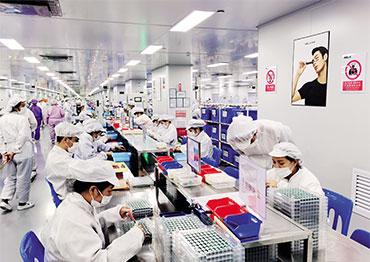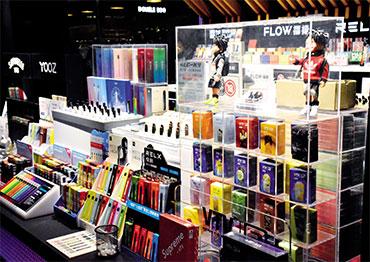But there are signs that regulation of nontraditional cigarettes has stepped up in recent years. In 2017, the STMA put “heated” cigarette products under market supervision, including e-cigarettes. The following year, the administration said it would regulate new tobacco products including e-cigarettes, strengthen market analysis and supervision research. In November 2011, a new article to China’s Tobacco Law bound new tobacco products like e-cigarettes to all existing regulations for traditional cigarettes.
“E-cigarette enterprises should have caught wind of the tightening regulations early and adjusted their manufacturing to keep in line with the increasingly stringent regulation,” Li Enze said.
Chen Zhong noted the measures, particularly regulations about flavor, will affect the supply chain. “The ban will decrease production of flavored cigarettes that account for a big share of the domestic market. Stronger brands might turn to overseas markets, but it might force smaller suppliers to close,” Chen said.
Meanwhile, companies that produce e-cigarettes for export will be affected the least as long as their products comply with local regulations, Li Enze said.
“In the future, as China’s e-cigarette industry makes up over 90 percent of the global market, encouraging exports and exploring overseas markets will remain the main direction,” said Ao Weinuo, an official with the China Electronics Chamber of Commerce.
Several interviewed experts see the measures and national standard as positive, believing they will eventually lead to better development of the industry.
Fang Hui noted that the measures will reshape all links in the industrial chain from manufacturing to sales. “Competition in the industry will become more orderly and healthier and some big companies will stand out with their technology and distribution,” Fang said. “We will try our best to adapt to the new environment and make adjustments in technologies and other aspects according to the measures.”
But some industry insiders have worries about the across-the-board rule on flavored vapes. Drawing from the experience of the US, which banned many flavored e-cigarette products in 2020, an employee at an e-cigarette company who spoke on condition of anonymity told NewsChina the sweeping ban might lead to a rise in consumption of traditional cigarettes and a black market for flavored e-cigarettes.
Li believes the measures need to be more specific and executable. For example, the regulations ban e-cigarettes from being sold near schools, but do not specify a distance – he suggested at least 100 meters. Also, the measures do not clarify the e-cigarettes ban, which means public places like shopping malls, airports and train stations could still sell e-cigarettes. Some stores even display e-cigarettes next to school products, which could mislead minors. “In the future, it should be clearly stipulated that the use and sale of e-cigarettes should be banned in places that teenagers frequent,” Li said.
“The implementation of new measures might result in the closure of many shops,” Chen said.
Though the measures came into effect in May, the national standard will not take effect until October 1, leaving a five-month transition period for e-cigarette manufacturers, which also means some flavored vapes can still be sold until this date. “After the standard is published, e-cigarette manufacturers will require time to adjust to compliance designs, update products and apply for product testing and appraisal,” said the STMA on its official website. The STMA also made clear that existing registered e-cigarette manufacturers are not allowed to expand production or set up new retail outlets during the transition period.
On June 2, the STMA said on its website that it began to review applications for liscense from e-cigarette producers and wholesalers since May 5, and applications from e-cigarette retailers since June 1. It stressed that only those who pass the assessment according to the national standard can register at the national e-cigarette trading platform, and warned that flavored vapes submitted by some operators would not get approval.
On June 19, the STMA declared that the national e-cigarette trading platform went into operation on June 15, where nicotine for vapes and vape products can be traded among licensed producers, wholesalers and retailers. Importers and exporters will also have to register on the platform in the future, the STMA says.
“The measures do not ban e-cigarettes completely, recognizing that e-cigarettes are targeting adults and leaving room for the industry’s development in the future,” Chen said.

 Old Version
Old Version

